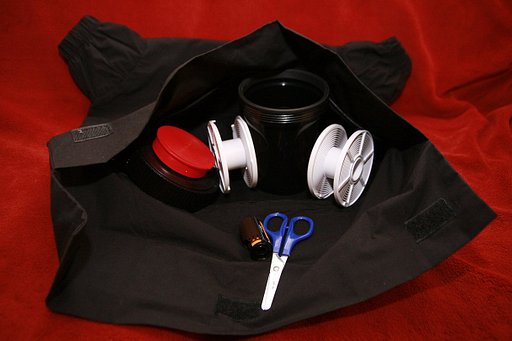Self-developing film
Here you can find all the information needed to get started self developing film at home. Check out this page to find out what equipment you will need, chemicals and their disposal, and a step-by-step tutorial for home processing.
Most Popular Courses
-
What equipment do I need to develop film at home?
You will need: A changing bag, developing tank, reels, developing solution, fixer, hypo cleaning agent, access to water, clips, timer, thermometer, and measuring cups.
-
Is it cheaper to develop my own film at home?
Yes, if you shoot a lot of film it can often be cheaper to develop it yourself at home.
-
Can you develop film without a darkroom?
Yes, however the spooling of your film must be performed in the dark.
-
How to develop black and white film at home
Load your film in the dark, prepare your solution at 20℃, pour developer for the desired amount of time, wash, pour the fixer for the desired amount of time, wash with hypo solution, and hang to dry.
-
Why is black and white film easier to develop at home than color film?
The steps involved in developing color film are more complicated than with black and white, and temperature control is also a key part of the process.
-
How to safely dispose of film developing chemicals
The best way to dispose of your chemicals is to discharge them at your city’s waste collection point.
-
Can I still develop expired film?
Yes, in most cases expired film can still be developed normally. Though there may be some visible degradation noticeable in the final images, depending on how many years the film has expired by, as well as the conditions it has been stored in.
-
How long does it take to develop a film?
Depending on how familiar you are with the process of self-developing film, it can take around 30 minutes (or less if you’re a pro!) to an hour to self-develop a roll of film.
-
Can I develop color film at home?
Definitely! Film self-developing equipment such as the Lomo Daylight Development Tank are perfect for beginners getting into self-developing film, whether it’s black and white or color film.
-
What is the easiest way to develop color film at home?
It is sometimes said that color film is more difficult to develop at home than black and white film. However, with a bit of practice developing color film is a simple enough process. Here’s how it’s done.
-
How to load film onto a developing reel?
Clip the start of your film to the developing reel, then rotate the reel while the film feeds itself onto the spiral until the whole film is in place.
-
How do agitating times affect the results when self-developing film?
Agitating times in film development affect the amount of contrast, highlights and grain of the visible images in a negative.
-
What chemicals are needed for self-developing film?
Developer, stop bath and fixer are the three key chemicals for self-developing film. Meanwhile, other chemicals such as wetting agent are also optional to ensure a cleaner turnout.
-
Is it okay to use expired developer?
It usually depends on storage conditions and how long ago the developer expired.
-
How to clean film developing equipment after use?
Cleaning and taking care of your film developing equipment is easy, and important in order to ensure safety and the product’s longevity.
-
How to store film developing chemicals and equipment?
Film development chemicals should be kept out of direct sunlight to avoid deterioration. As usual, these chemicals should be kept tightly sealed at room temperature, or in a dark, dry place.
-
How to retrieve the film leader from the canister?
Retrieving the film leader from the canister can be a tricky endeavor, but a few tricks can help you master this important part of self-developing film!
-
How many rolls of film in a row can I self-develop?
The answer is, as many as you want! Developing multiple films in a row is a good way to get comfortable self-developing film, especially with equipment such as the Lomo Daylight Development Tank. It all really depends on the quantity of chemicals you have and the dilution ratio for each film stock you’d like to develop.
-
How long can I keep film developer before it goes bad?
Developers can come in liquid and powder form, with liquid developers typically having a shorter shelf life than powder-form developers. Some liquid developers last about 3 to 6 months, while others can last up to a year or more if stored properly. Powder-form developers, on the other hand, can last up to 5 years.
-
What happens if my developer is expired?
Using expired film developers can result in underdevelopment, over or underexposure, drastic color shifts for color film, uneven contrasts, increased grain, or an overall reduced image quality. At worst, it can also result in blank rolls.




